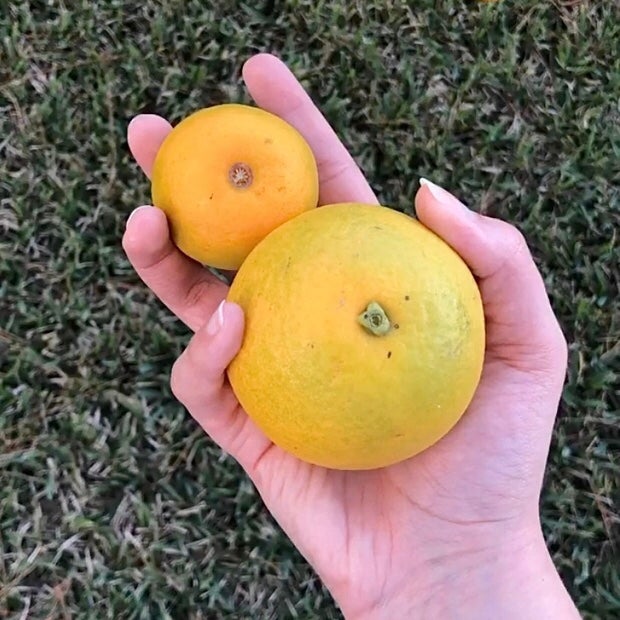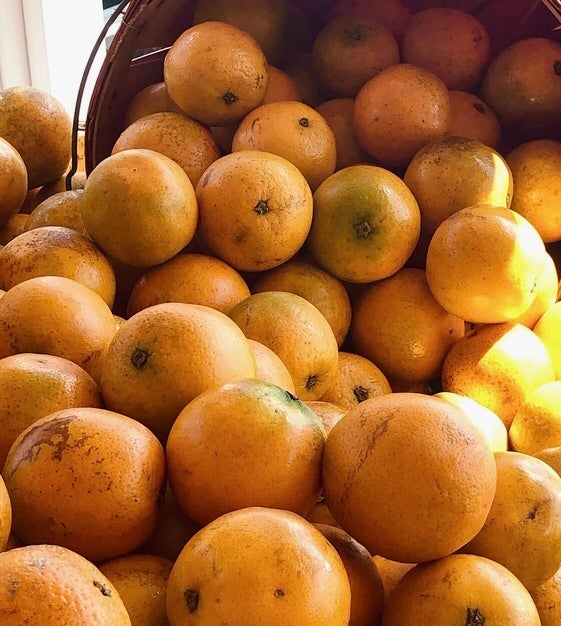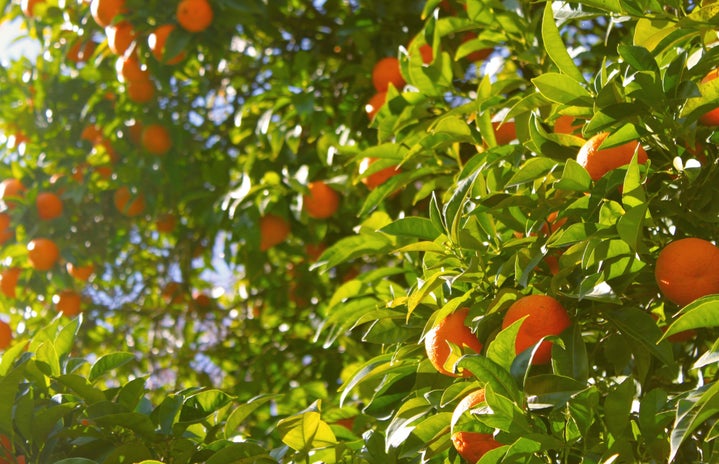As a born-and-raised Floridian, I hate the winter. I find very little joy in a season with less sun and colder temperatures. What is long underwear? I refuse to learn because I’d be letting winter win—and I won’t let that happen.
One of the only redeeming qualities of winter is citrus fruit season. Many citrus fruits are available year-round, but in Florida, the peak season for some of the most popular varieties of citrus is in the colder months of winter. If you’re in Florida and haven’t sampled the local citrus, you’re sorely missing out on an important—and delicious—part of Florida’s history, culture, and environment.
In celebration of these magnificent fruits, here’s a ranking from worst to best of some of the citrus that Florida has to offer. I’ve also added a fun fact about each of them for your trivia-loving pleasure.
Worst: Grapefruit
Sour, bitter balls of misery. Grapefruit eaters: why do you do this to yourself? Is there not a more efficient way to self-sabotage than purchasing and consuming a grapefruit? What purpose does intentionally ruining your day serve? Please eat a fruit that is not soul-sucking.
Fun fact: I was hard-pressed to find anything nice to say about grapefruit. However, I did find out that February 26 is Grapefruit Day in Japan, and in 2021, the date marked the commemoration of 50 years of grapefruit trade between Florida and Japan.
Pomelo
Grapefruit’s grandfather—and it tastes like it too. Pomelos only get a higher ranking because they can grow absolutely enormous, which is pretty neat to see in real life.
Fun fact: Pomelos are one of the four (or five, depending on which scientist you ask) ancestral species of citrus. This means that, unlike many of the commercially available citrus varieties today, pomelos are not hybrids of two or more fruits.

Lemon
Lemons are ranked in the middle because on their own, their sourness makes them unpleasant to eat. But paired with the right partners, lemons can do magical things. A glass of homemade lemonade can brighten up the worst of days, and lemon bars are a suburban favorite for a reason!
Fun fact: Carl Linnaeus, the creator of the modern taxonomic system, believed lemons to be a variety of citron. Current scientific knowledge supports a different idea: lemons and citrons are distinct species, with lemons being a citron-sour orange hybrid fruit.
Lime
The most popular varieties of lime are the Persian lime and the Key lime. They are available all year thanks to global trade, but unlike the other fruits on this list, Florida Key limes actually peak during the summer (though most Key limes in American markets today hail from Mexico). Despite this, I feel they deserve a place on this list. Limes are the perfect way to cut through a rich dish with their tart juice. They also make a refreshing addition to water if you’re not into drinking unflavored water. Limes are ranked above lemons because lemons sometimes smell like cleaning products. No one wants to be reminded of their bathroom while eating.
Fun fact: Key lime pie is the official state pie of Florida!
Orange
The quintessential Florida fruit and the queen of variety! Images of oranges are plastered all over signs near the state border, rest stops, and tourist traps. An entire county bears the name of the fruit, and it is well-deserving of the honors. Modern oranges are hybrids of the pomelo and mandarin and come in many varieties, including the navel orange—popular for their seedless pulp and easy-peel rind—and the bitter orange, which is an important ingredient in the Cuban marinade, mojo. Pictured below are Valencia oranges harvested from a little tree in my backyard.
Fun fact: Only around 10 percent of Florida oranges are sold for eating. Where is the majority of the orange crop going, then? They’re squeezed into juice!

Best: Tangerine
Tangerines are pretty much perfect. They are both sweet and easy to peel. The sections come apart so cleanly that if tangerines had bones, the fruit would just fall off. They are typically small in size, which makes them an amazing packable afternoon snack. On top of that, they’re seedless, which means no stopping to spit out bitter seeds you accidentally crunched while minding your citrus-eating business. There is not a single bad thing about tangerines.
Fun fact: Tangerines are actually a type of mandarin orange. Mandarins are the ancestors of many citrus fruits—including oranges and lemons—placing tangerines at the head of the citrus dining table. A well-deserved position, if you ask me.

I hope you enjoyed this very unbiased ranking of citrus fruits! If you want to try some other citrus varieties, try hitting up a nearby Asian market, where you might find some more unique citrus, such as the Buddha’s hand citron. Also, be sure to support your local orange groves! Florida’s citrus growers have seen increased difficulty as diseases severely damage many groves across the state. Shop local and support your growers!


